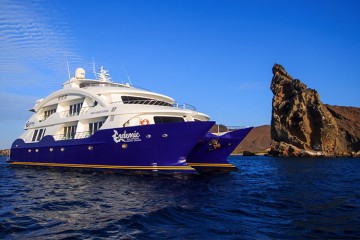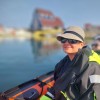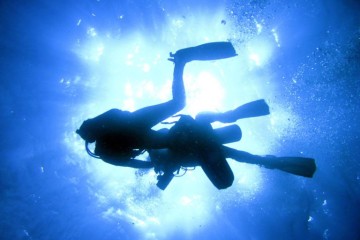Considering that the Galapagos Islands are South America’s premier wildlife-spotting destination, we admit that getting an eyeful of the exceptional creatures living here is not exactly difficult. Most of the time, you literally just have to stand there (here, there, anywhere, really) and, if you wait long enough, you’ll have a Giant Tortoise, Marine Iguana, Sally Lightfoot crab or Blue Footed Boobie waddle right past you. Really. The Galapagos are THAT awesome. Nevertheless, there’s still plenty you can do to intensify the experience and this is especially true if there are specific animals you wish to see.
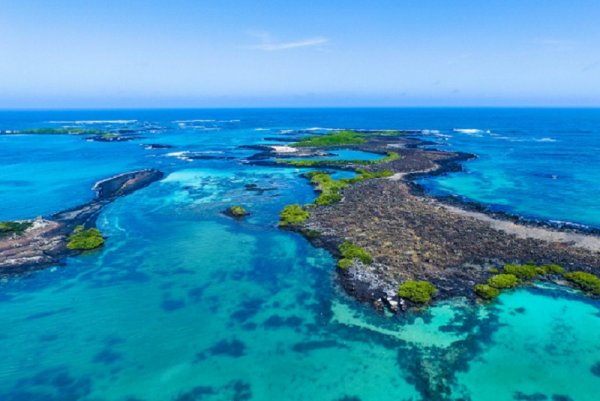
Isabela Island, Galapagos Islands
All up, the Galapagos are home to almost 60 distinct species of wildlife, more than half of which are found here, and here alone. There are also plenty of migrating whales, dolphins and sea lions that make regular appearances, much to the delight of guests aboard Galapagos cruises. A mind-boggling array of truly unique animals, all displaying crazy characteristics that have evolved as a consequence of the pristine living conditions: this is what a Galapagos vacation is about discovering! You’ll encounter birds that have lost the ability to fly (because they just don’t need to) iguanas that live at sea as comfortably as they do on land and penguins that, remarkably, live right on the Equator line.
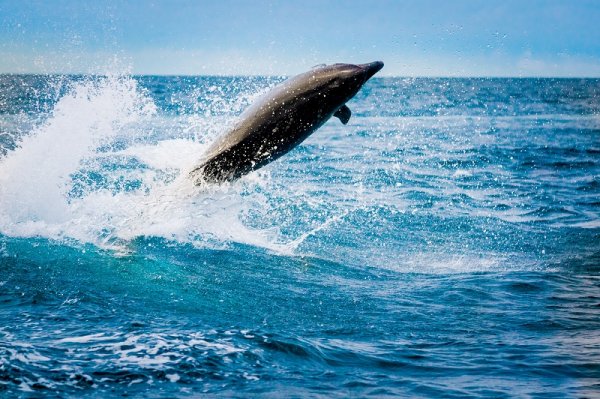
Playful dolphin jumping in the ocean, Galapagos Islands
Click HERE to see our Galapagos Tours
This isn’t ‘just another wildlife destination’…the Galapagos are THE wildlife spotting destination! Check out all the weird and wonderful Galapagos wildlife you can expect to meet.
Click the links below to skip through the article:
- Wildlife-spotting in the Galapagos
- How to best experience Galapagos Wildlife
- The Galapagos Giant Tortoise
- Blue Footed Boobies
- Marina Iguanas
- Snorkelling in the Galapagos
- Responsible Tourism in the Galapagos
- See all our Galapagos Cruises
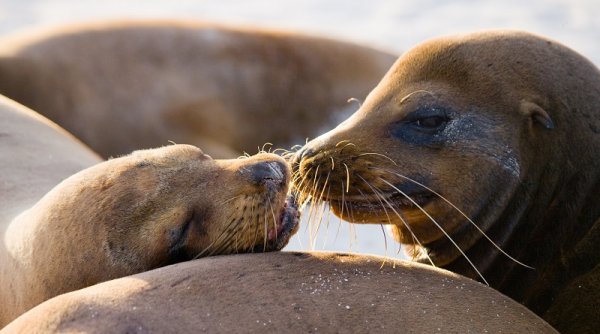
Sea lions lying on the sand, Galapagos Islands
Click HERE to see our Galapagos Cruises
Wildlife-spotting in the Galapagos
Not every wildlife in the Galapagos can be seen on every island so knowing where each species is likely to be found will help you hone in on the specific Galapagos cruise itinerary that’ll suit your wishes. Moreover, certain months also see a hive of activity, depending on the species, so if there’s a particular event you wish to witness (say, the glorious mating dance of the albatross and boobie, for example) knowing when to plan your Galapagos vacation will be very useful. You can learn more about The Best Time to Visit the Galapagos Islands for more island-specific wildlife info.
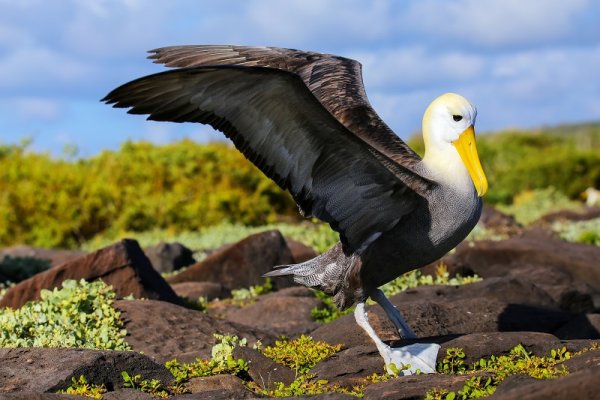
Albatross spreading its wings on Espanola Island, Galapagos Islands
Click HERE to see our Wildlife Tours
How to best experience Galapagos Wildlife
Sailing around the Galapagos is the best way to spot wildlife, considering only a few islands offer accommodation options so your ‘scouring’ range is greatly diminished on land-based tours. Not only can you reach the remotest islands (that you’d have no way of visiting otherwise) but, on Galapagos cruises, most of the sailing is done overnight so your daytime hours allow for maximum explorations, both on land (by hiking) and at sea (by snorkelling and SCUBA diving).
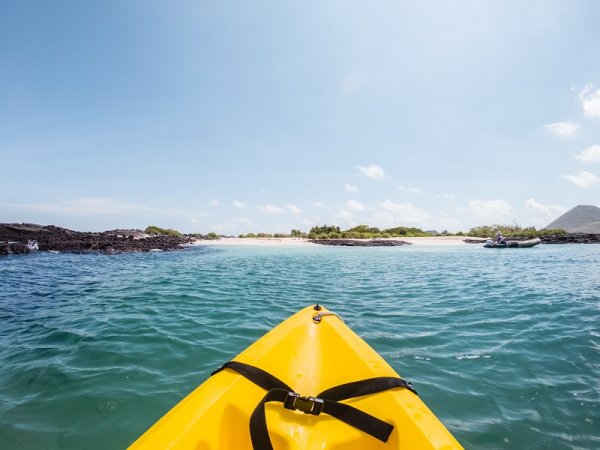
Kayaking in the Galapagos
Click HERE to see our Galapagos Cruises
The Galapagos Giant Tortoise
The island’s wildlife star is actually the easiest to see, as Isla Santa Cruz, the base-island all visitors get to first and foremost, is home to the revered Charles Darwin Research Station. This amazing place offers a fantastic introduction to the Galapagos – not only will you likely spot your very first tortoises right here but you can also learn about the extensive conservation efforts (not only of tortoises but other Galapagos wildlife) that are helping these precious animals thrive. Santa Cruz is also home to a wild tortoise population that can be spotted mating in the highlands if you visit between June and December.
Other prominent Giant Tortoise populations can be spotted on Isabela, Floreana and San Cristobal islands. Out of these three, the best destinations for tortoises is Isabela. Given the island’s impressive size and the tortoises’ roaming areas, five distinct subspecies have evolved, making this about the best place to see them in the wild.
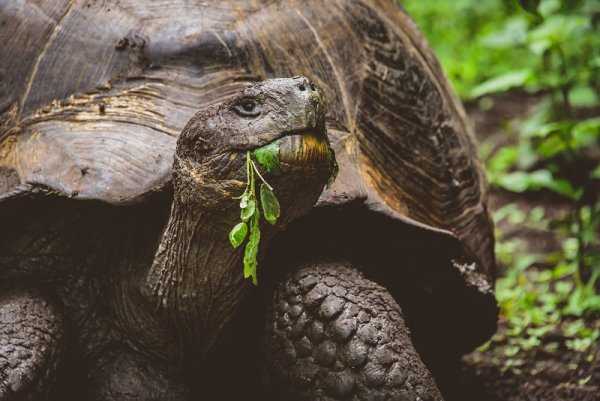
Tutrois in the Galapagos
Click HERE to see our Tours to Santa Cruz Island
Blue Footed Boobies
Everyone’s favourite clown bird, the Blue Footed Boobie, is one of the icons of the Galapagos and something that you’re luckily not going to miss spotting. Funnily enough, the bird with the bright blue feet is not endemic to these islands but is still inextricably linked to them and their mating dance, which can be seen in June, July and August, is one of the most sought-after wildlife spectacles of the year. Blue Footed Boobies are prolific in the Galapagos and can be spotted on several islands, most noticeably Santa Cruz, Espanola, Fernandina, Isabela, Floreana and Pinzon. If you’re planning a Galapagos vacation during mating season, however, choose a cruise itinerary that includes North Seymour Island, as this speck of gorgeousness boasts the largest breeding colony of them all.
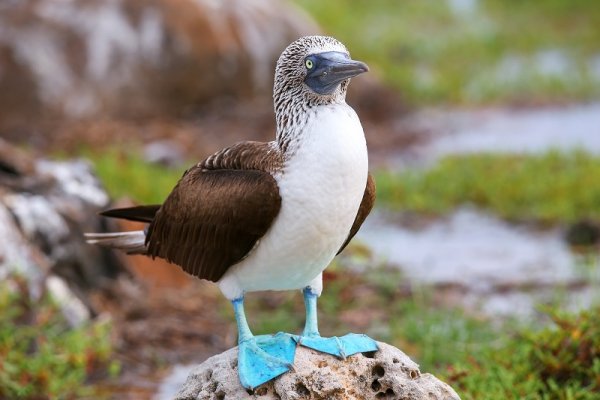
Blue-footed Booby on North Seymour Island, Galapagos Islands
Click HERE to see our Tours to North Seymour Island
Marine Iguanas in the Galapagos
The only seafaring iguanas in the world, the Galapagos Marine Iguana is a force to be reckoned with. Or at least it looks like it is when it’s fighting to the blood for a mate! The archipelago is home to six distinct species of marine iguanas, each living on their own separate island. The main spotting sites are on Santa Cruz, Isabela, Espanola, Fernandina and Floreana, as well as many smaller islets you’ll pass along the way. You may not notice much difference but their physical characteristics are quite unique, with some being on the larger size (Isabela) whilst others a lot more colourful (Floreana). In the Galapagos, the marine iguanas are one of the most fiercely protected species because they are also one of the most vulnerable.
Although they do live comfortably on land, marine iguanas are not nearly as agile as they are at sea so have suffered greatly from invasive species (like wild dogs) that have been inadvertently introduced. There’s no doubt that the Galapagos are a reptile’s dream abode and for the iguanas, life here is pretty sweet. Unlike its mainland cousins, the Galapagos native can dive up to 15m depth in search of succulent algae and will then spend the rest of the day soaking up the UVs on sun-soaked rocks. Some Galapagos rocky shores are literally covered in them during the hottest part of the day and they make for some of the most photogenic subjects of all.
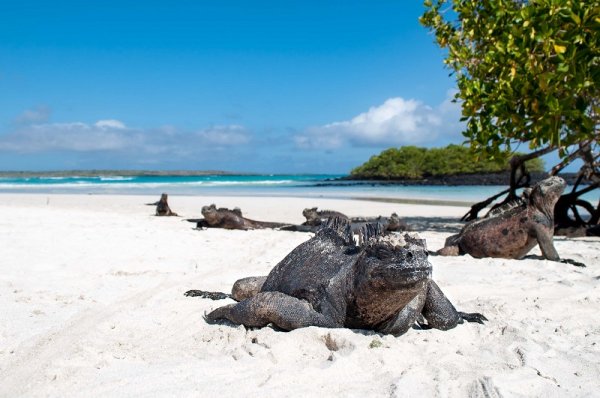
Marine Iguana taking a nap on an Island beach in the Galapagos
Click HERE to see our Tours to Floreana Island
Snorkelling in the Galapagos
The Galapagos may well straddle the Equator line but here you’ll find the sea to be a little on the chilly side, thanks to the cold Humboldt Current. No matter what time of year you visit, you’ll no doubt want to don a wetsuit when hitting the waves. Snorkelling in the Galapagos is the only way to spot hammerhead sharks and a wonderful way to see marine life in its most natural elements. Unsurprisingly, snorkelling is on a world-class level here and about the one place on earth where you’ll see as much of the marine treasures as those who are diving deeper. Sea lions, green sea turtles, Galapagos penguins, dolphins, reef sharks and even whales: these are just some of the highlights that await you in the Galapagos’ underwater world.
There are at least a dozen prominent snorkelling sites around the islands, some of the most revered being Lobos Islet near San Cristobal (renowned for its inquisitive sea lions that love to frolic with snorkellers), Punta Vicente Roca (a particularly calm cove replete with an impressive array of colourful fish) and the Devil’s Crown off Floreana, where moray eels, groupers, snappers, angelfish and countless other species congregate en masse. Choosing a Galapagos cruise that includes daily snorkelling stops is a must and, although some sites boast strong currents that may only be suitable for experienced swimmers, there’ll be plenty of quiet coves where beginners can get their sea legs. This is the one Galapagos activity no one should even contemplate skipping.
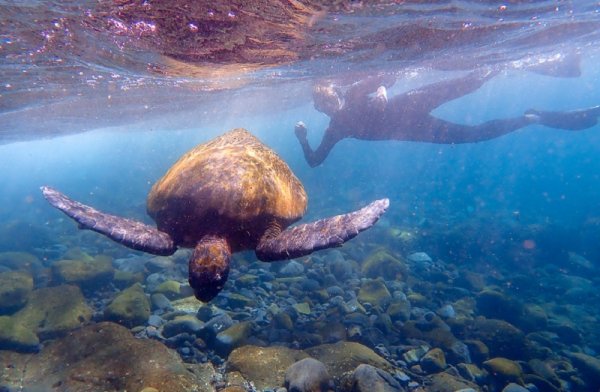
Snorkeling with Pacific Green Sea Turtle off the island of Isabela, Galapagos Islands
Click HERE to see our Galapagos Tours
Responsible Tourism in the Galapagos
As one of the world’s foremost natural treasures, the Galapagos Islands are avidly protected by the Ecuadorian Government and encompassed in a national park that includes both land and marine areas. You’ll need to pay a USD100 fee to gain entry (payable upon landing at the airport), with nearly 95% of the funds collected being poured right back into the reserve.
Strict guidelines for visitors also mean that there’s a limited number of boats that have permission to cruise around the Galapagos and, on some landing sites, there’s also a limit to how many people are allowed to be on-land, at any given time. This means that if you choose a larger cruise ship, your time onshore will be restricted – not only will you need to disembark in shifts but you’ll also have to take into account other ships which may have arrived before you. The boast must also carry a naturalist guide which really makes the whole responsible tourism experience all the more rewarding for visitors. There’s an incredible amount to learn and know about the Galapagos and these cruises really are like a real-life documentary.

Cruise in the Galapagos
Click HERE to see our Galapagos Cruises
Want to feel as if you’ve won the Galapagos holiday prize of a lifetime? Then choose a small ship or catamaran that carries up to two dozen guests, as an absolute maximum. Your personal experience will be infinitely more magical this way. If budget is an issue, then choose a boat with fewer luxuries, rather than a larger one.
Land-based experience can be immensely rewarding too and also have the benefit of offering an income to small, locally-owned businesses. Although we still believe small ship cruising offers the better all-round Galapagos experience (especially when it comes to wildlife spotting) there’s nothing stopping you from enjoying a couple of relaxing days on land, either before or after your cruise. There’s a small but delightful range of stunning lodges here that are highlights of their own accord.
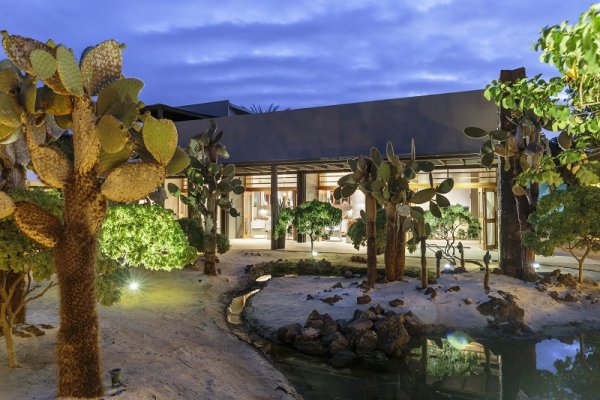
Finch Bay Hotel Garden
Click HERE to see our Finch Bay Eco Hotel Tours
At Viva Expeditions, we offer a wealth of Galapagos cruise experiences and tours and can find an itinerary to suit your specific wishes and budget. See our full range of Galapagos vacations, right here.
Laura Pattara
Laura Pattara writes for Viva Expeditions with a special love for all things Latin America. She had guided overland tours across the continent, reached Machu Picchu five times on foot, and even dressed up as a giant toucan for Carnaval. With a degree in languages and two decades of global travel experience behind her, Laura has a long-standing love for the Andes, soaring condors, and a truly delicious empanada.
|
